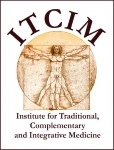
Ing. Klára Doláková, MBA - Czech Republic
Abstract of the presentation
Models of Collaboration Between Health Professionals, Researchers, and TCIM Practitioners: Findings From a Qualitative Study in the UK
Branch: Other
Theoretical background: Traditional, Complementary, and Integrative Medicine (TCIM) approaches are of interest to the general public, and in some countries selected methods are available through the health care system. In the UK, changes in National Institute for Health and Care Excellence (NICE) recommendations have led to the integration of selected TCIM into health services. However, there is no systematic integration of TCIM into the health service, and therefore this study explored models of collaboration between TCIM practitioners and health professionals in the National Health Service (NHS) clinical practice setting.
Aim of the study: This qualitative study explored practitioners' experiences of integrating TCIM interventions into the NHS clinical setting. The main aim was to identify what models of collaboration are currently in practice and what UK practitioners believe are the mechanisms and circumstances for their implementation.
Methods: Semi-structured interviews were conducted with selected participants. Field notes and recordings of the interviews were taken. Audio recordings were transcribed verbatim. The transcripts were thematically analysed using the framework methodology.
Results: Twenty-one participants, identified as researchers/academics, TCIM practitioners, and physicians, took part in the study. Several unique models of collaboration between TCIM practitioners and health professionals were described (e.g., an acupuncturist in a general practitioner’s office, an herbalist in a hospital ward, or a healer collaborating with a physician on research). Collaborations were found to emerge through passionate individuals who are able to establish and build relationships in the health care sector. Thus, interpersonal relationships, openness to other approaches, and knowledge of the potential use of TCIM approaches are important.
Conclusion: This study has revealed models of collaboration in primary and secondary care that allow for the integration of certain TCIM interventions within and beyond current NICE recommendations into the NHS. Further research is needed to determine whether these models can be applied in systematic integration nationally or in other countries.
Keywords: traditional medicine; integrative medicine; complementary medicine; integration; NHS
Please note that some of the texts also include machine-generated translations.





